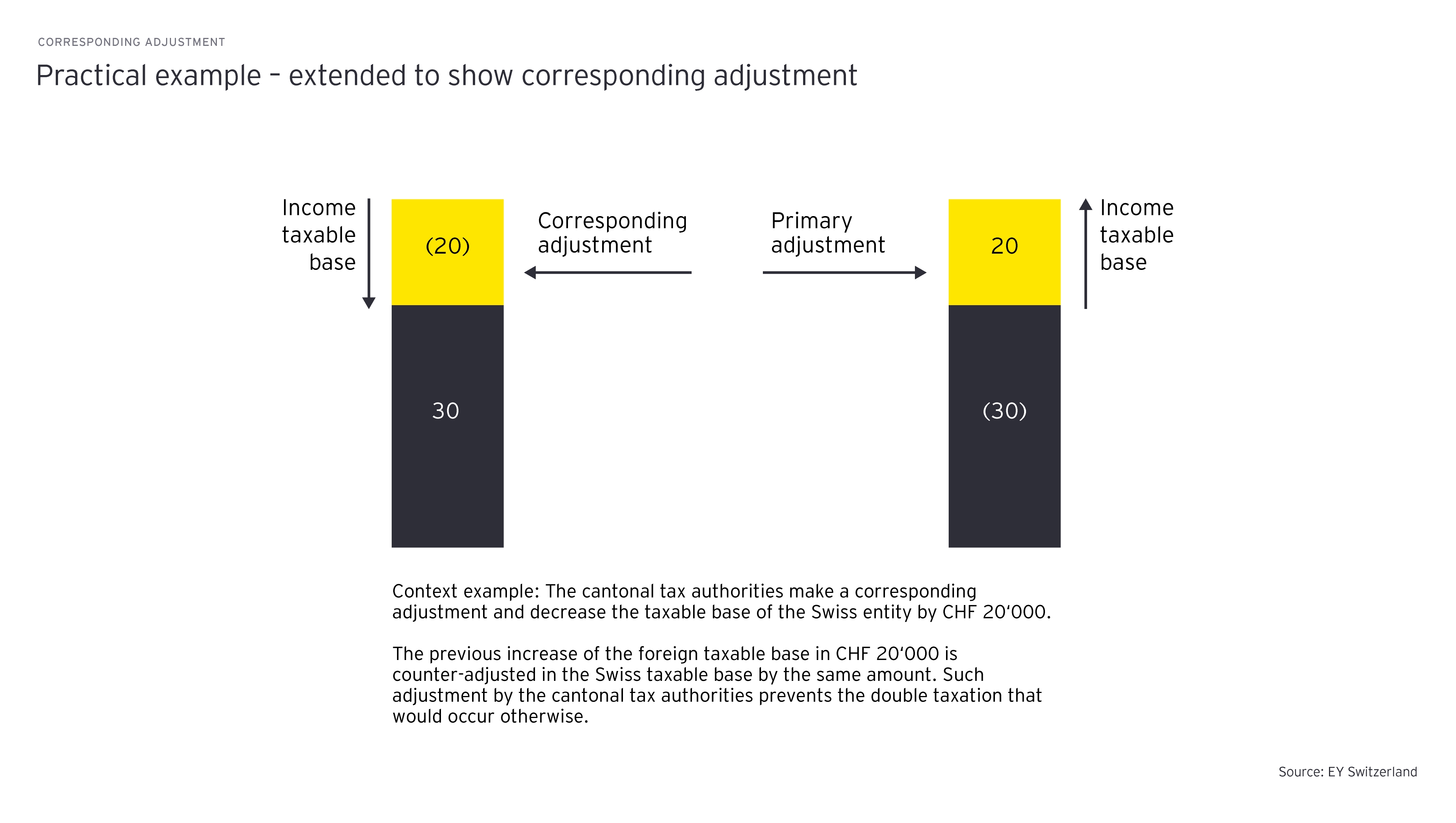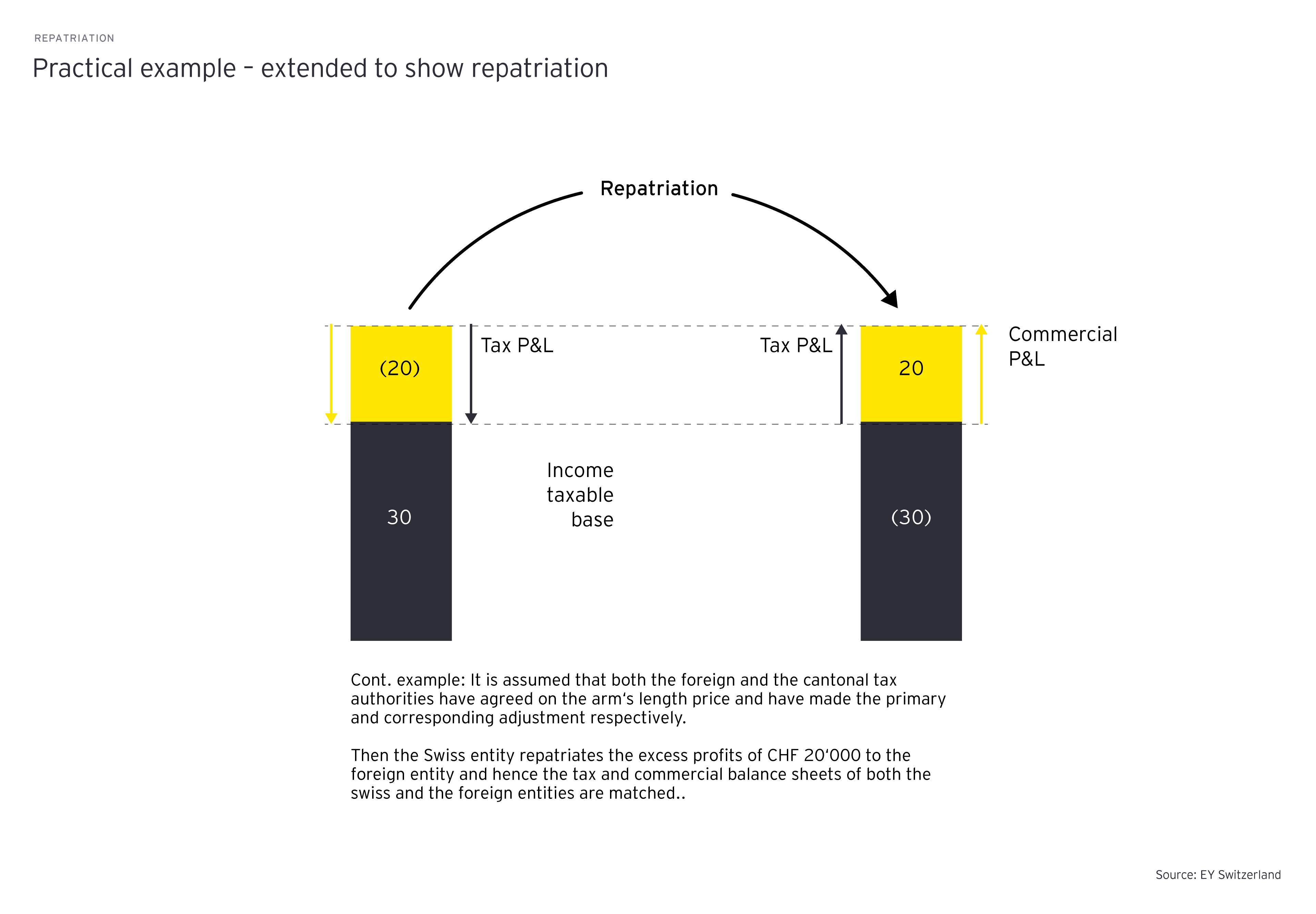In contrast to primary and corresponding adjustments, a secondary adjustment does not lead to a change in an entity’s taxable income, but instead triggers an additional tax. In the case of Switzerland, withholding taxes may be levied on such secondary transactions which qualify as cash benefits from a TP perspective.
In Switzerland, the responsibility for making secondary adjustments lies with the SFTA, which administers the Swiss withholding tax system and levies withholding tax. A secondary adjustment or withholding tax liability will generally be triggered if (1) a primary adjustment is imposed by the responsible Swiss tax authority or (2) a foreign tax authority imposes a primary adjustment which leads to a corresponding adjustment in and repatriation out of Switzerland. Both adjustments qualify as constructive dividend payments from a Swiss tax perspective.
Under a primary adjustment imposed by the cantonal authorities, the taxable income of the Swiss entity will be increased as a result of the disregarding expenses paid above the arm’s length price to an associated entity in a foreign country. The amount paid in excess of what the responsible cantonal tax authority considers at arm’s length is a secondary transaction. This secondary transaction, qualified as a constructive dividend, is subject to withholding tax (i.e., secondary adjustment) at a statutory rate of 35%.
In the reverse case, where a foreign country imposes a primary adjustment, a corresponding adjustment in Switzerland is the likely consequence. Whereas this leads to a decrease in the Swiss entity’s taxable income as a result of decreasing the income received above the arm’s length price, it implies that the Swiss entity should pay that amount received in excess of what the responsible domestic and foreign tax authorities consider arm’s length back to the entity operating in the foreign country (repatriation). As in the case of a Swiss primary adjustment, this secondary transaction (repatriation), qualified as a constructive dividend, is subject to withholding tax (i.e., secondary adjustment) at a statutory rate of 35%.
In both cases, the conclusion of a MAP will influence how the SFTA will impose a secondary adjustment, i.e., levy withholding tax.
Swiss withholding tax on (constructive) dividend payments generally becomes due 30 days after the dividend due date. Failure by the dividend payer to declare and remit the relevant withholding tax amount – Swiss withholding tax is, generally, a self-declaration tax – will lead to late payment interest consequences and may also carry a fine.
In cases of primary adjustments or repatriation payments, the SFTA will generally inform the Swiss entity that a withholdable transaction has occurred. Withholding tax must then be remitted (a topic not in scope of this article) within the given payment deadline with late payment interest accruing as from the dividend due date +30 days. For primary adjustments, the due date will be the date of the original transaction (later amended via primary adjustment); for repatriation payments, the due date will be the actual payment date.
Pursuant to current SFTA practice, as clarified by the newly issued Q&A, the SFTA will refrain from levying withholding tax on secondary transactions if the following conditions are met cumulatively:
- A MAP or domestic agreement has been concluded
- The repatriation amount matches the amount agreed in the MAP or domestic agreement
- The mutual agreement (or domestic agreement) makes specific reference to Swiss withholding tax, i.e., sets out that no withholding tax should be levied






